Chris Riley tests the 2021 Hyundai Sonata N Line with pricing, specs, ride and handling, safety, verdict and everything the over-50 driver needs to know.
Summary: Sonata N Line makes all the right noises and has all the right moves. It will be a shame if this car does not get the attention it deserves, primarily because of the Sonata name and history.
2021 Hyundai Sonata N Line
Pricing: $50,990 (plus on road costs). Metallic/mica paint: $595.
Warranty: Five-years, unlimited km
Safety: not tested
Engine: 2.5-litre Smartstream turbo GDi petrol four-cylinder
Power: 213kW at 5800rpm
Torque: 422Nm at 1650rpm
Transmission: eight-speed dual clutch automatic
Drive modes: normal, sport, sport+, custom
Drive: front wheels
Body: 4900mm (long); 1860mm (wide); 1445mm (high)
Ground clearance: 135mm
Weight: 1636kg
Towing capacity: 1400kg
Wheels: 19-inch alloy
Tyres: 245/40 R19
Spare wheel: space saver/temporary
Turning circle: 11.0m
Fuel tank: 60 litres
Thirst: 8.1L/100km (combined, 91 RON unleaded)
Consumption on test: 9.1L/100km
[review]
The Hyundai Sonata dates all the way back to 1989 in Australia.
Now in its eighth generation, it started life as a staid, medium-sized four door sedan that offered family-friendly motoring for a budget $19,990.
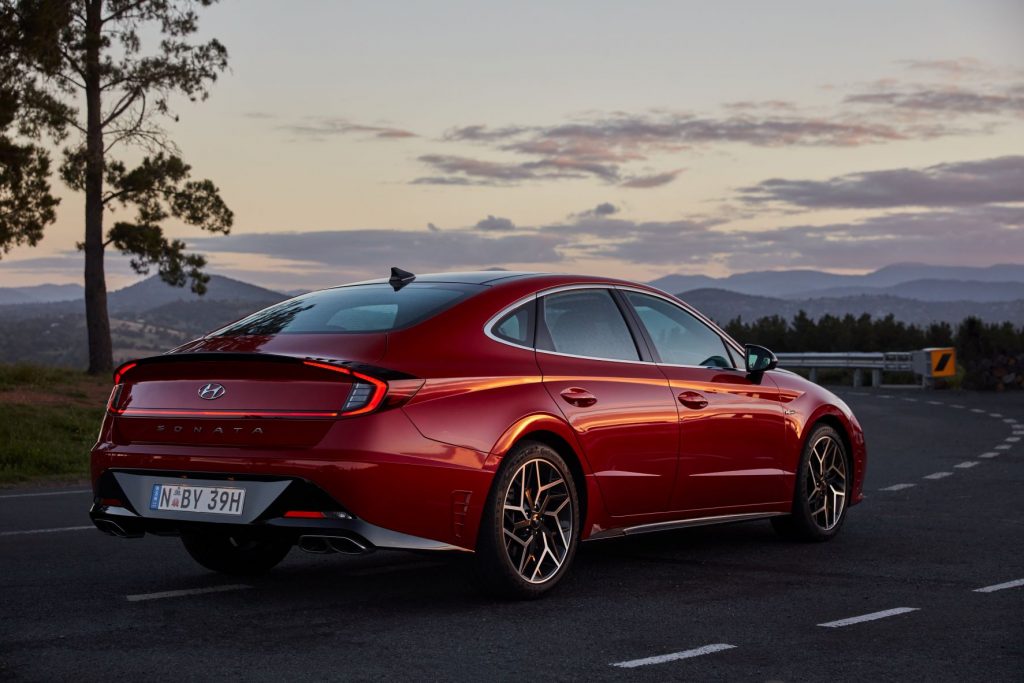
More than 30 years later, the latest Sonata N Line, launched in December last year, has undergone a transformation — to emerge as a highly desirable turbocharged sports machine.
In fact, you might be surprised to learn it now pumps out more power and torque than the hero i30 N high performance range.
There’s just one fully equipped model priced from $50,990 plus on-roads (for a white one that is).
At the moment you can grab one for $55,654 driveaway, which includes metallic paint, normally a $595 extra.
There’s four colour choices — White Cream, Hampton Grey, Flame Red and Midnight Black — but only white is free.
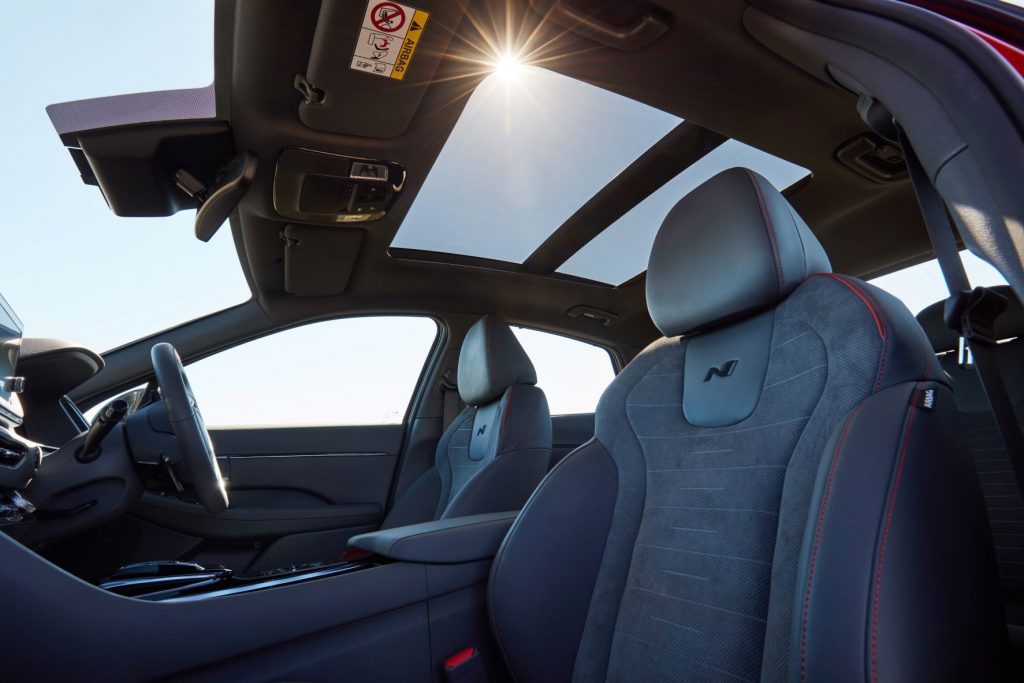
Inside the cabin is trimmed in an upmarket combination of suede and black Nappa leather, with decorative N Line badging.
The dash incorporates a free-standing 10.25-inch touchscreen and separate 12.3-inch configurable LCD hi-res colour instrument panel.
Creature comforts include heated and ventilated, power-adjustable front seats, heated outer rear seats, dual-zone climate control and a panoramic sunroof.
Profiles store multiple driver preferences, including seat and side mirror positions, head-up and driving mode settings, navigation history, active Bluetooth device and radio station settings.
Other nice touches include auto high beam, adaptive cruise control, wireless smartphone charging, Head-Up Display (HUD) plus front and rear park sensors, with Surround View Monitor (SVM) with Rear View Monitor and Parking Guidance.
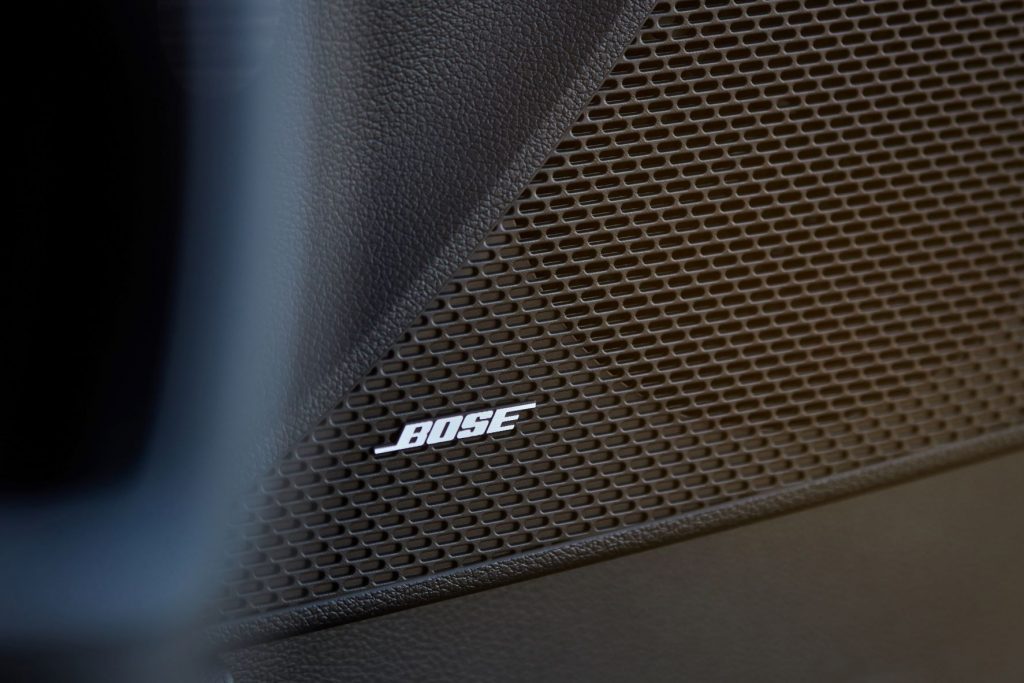
A 12-speaker Bose premium audio system surrounds the occupants with three speakers up front, three on each side and three in the rear.
The system features CenterPoint surround technology, which splits music into multiple channels, to fully immerse occupants in a surround sound experience.
The infotainment system offers Apple CarPlay and Android Auto compatibility, along with satellite navigation, AM/FM and digital radio, Bluetooth audio streaming — and you can use voice command for text messages.
Standard SmartSense technologies include Forward Collision-Avoidance Assist with Junction Turning Assist (FCA-JT) function, Driver Attention Warning (DAW) and Blind-Spot Collision Avoidance-Assist (BCA) systems.
It also features Rear Cross-Traffic Collision-Avoidance Assist (RCCA) and Lane Following Assist (LFA) systems, and Smart Cruise Control (SCC) with Stop & Go.
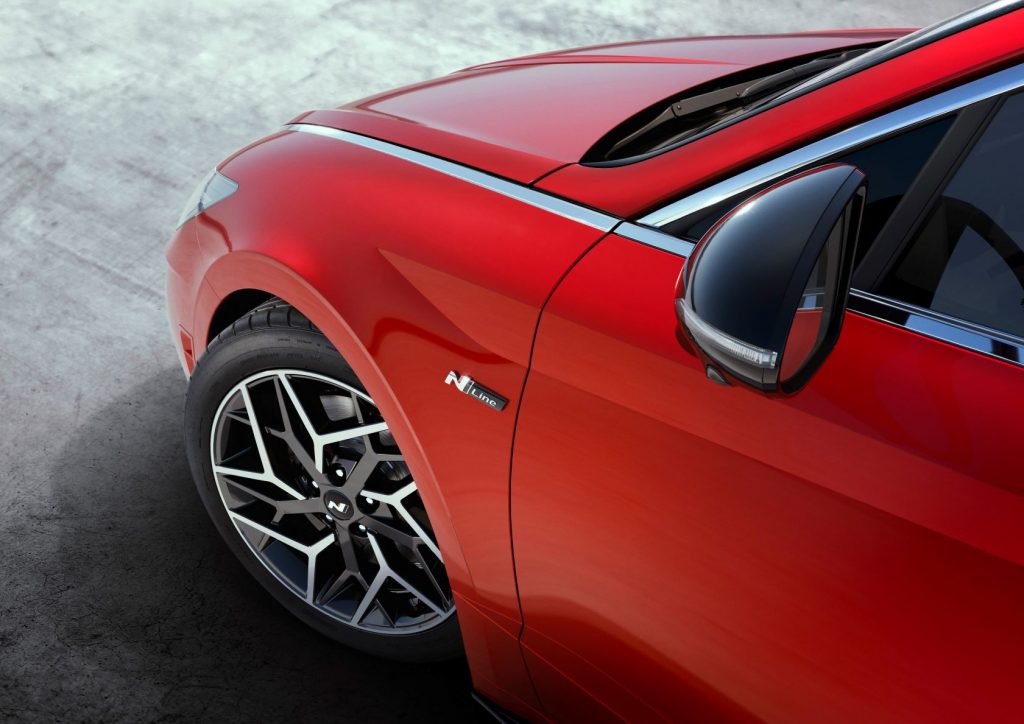
With the latest model Sonata N has adopted the low-slung lines of a coupe, which sits low and wide with aggressively sculpted curves.
The wide, droopy face with its bold cascading glossy black grille evokes classic Italian sports cars of a bygone era.
At the rear, an LED strip links the LED tail lights to create a sense of width and striking appearance at night, with twin tailpipes integrated on each side of a lower diffuser.
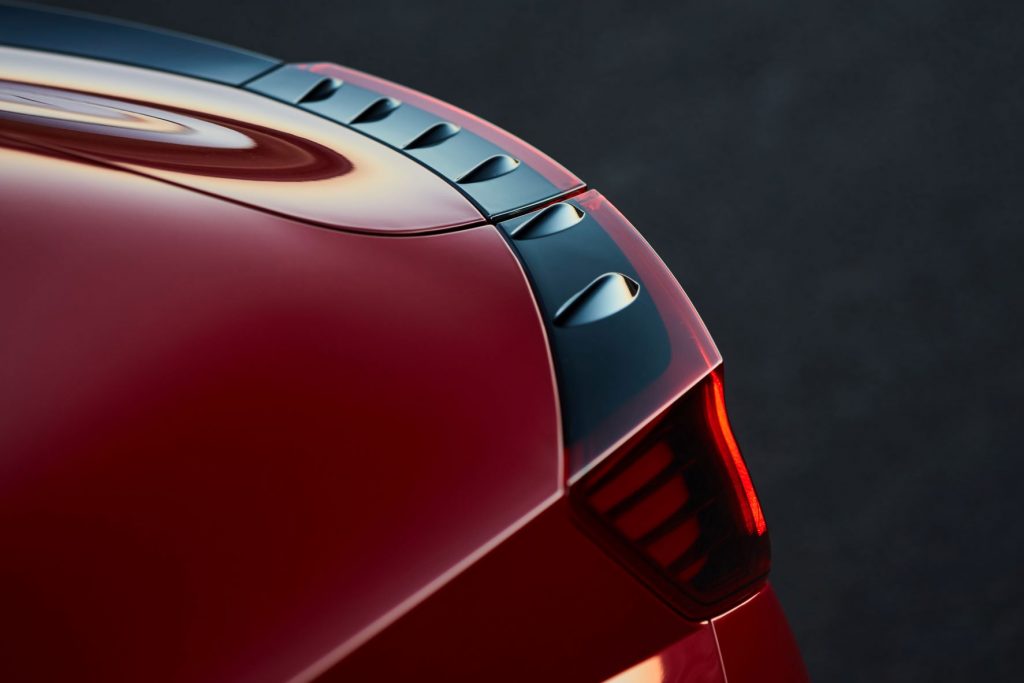
A Sports body kit, LED headlights, DRLs and tail lights, and 19-inch alloys wrapped in 245/40 Continentals complete the picture.
The addition of a turbocharger, different cylinder head, and unique internals contribute to significantly better performance compared to the 142kW of the previous standard naturally aspirated engine.
The Smartstream 2.5-litre turbocharged GDi engine delivers 213kW of power and 422Nm of torque, the latter from 1650 through to 4000 rpm.
That, folks, is more than the excellent i30 Fastback N, which is good for 206kW and 392Nm.
Of course Sonata is larger and weighs more — but you do get bragging rights.
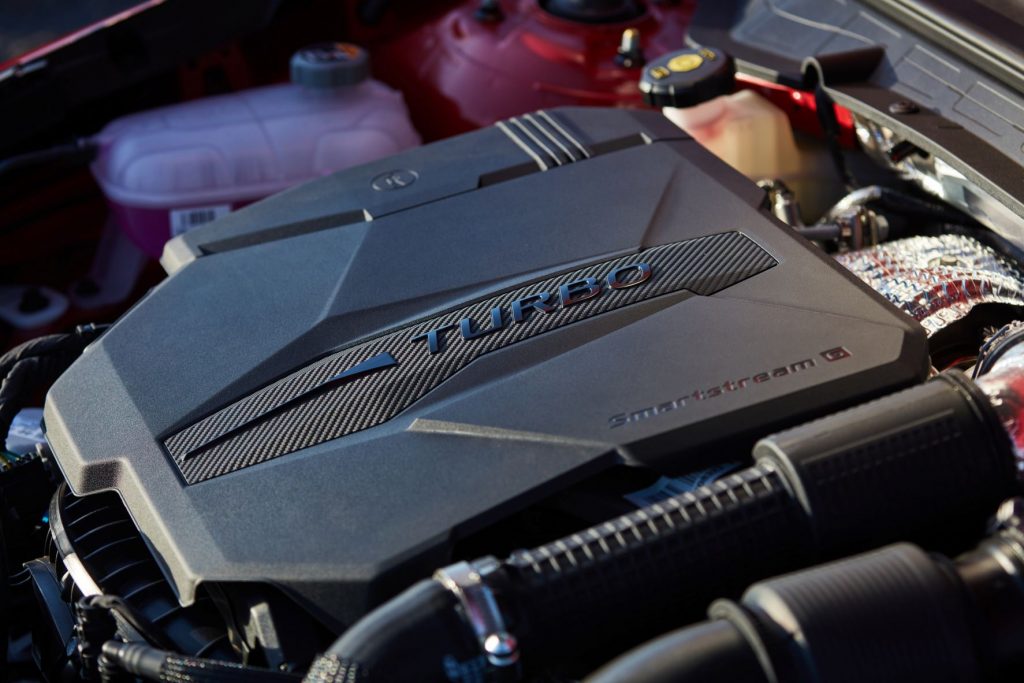
The 213kW engine is paired with a ‘wet’ 8-speed Dual-Clutch Transmission (N DCT) developed specially for N vehicles, featuring shift-by-wire, push-button gear selection as well as paddle shifters.
Drive modes include Normal, Sport, Sport+ and Custom, while shifting between modes changes the look of instruments to reflect each mode.
In addition to changing the cluster, toggling through modes alters the steering weight and the speed and strategy of the transmission shifts.
With a kerb weight of 1636kg, suspension is Mac strut front and multi-link rear, with Monotube rear dampers that deliver rapid response, making the car more agile than you might expect for the size.
Other features include rev-matching, N Power Shift, launch control, active sound design (ASD) and shifting pattern.
N Line has stacks of low and mid-range grunt and pulls strongly all the way to redline, with fast, snappy changes from the twin clutch transmission.
It does however display a slight hesitancy when you back off, then almost immediately hit the throttle again.
But then, you’ve got to remember . . . it is a twin clutch.
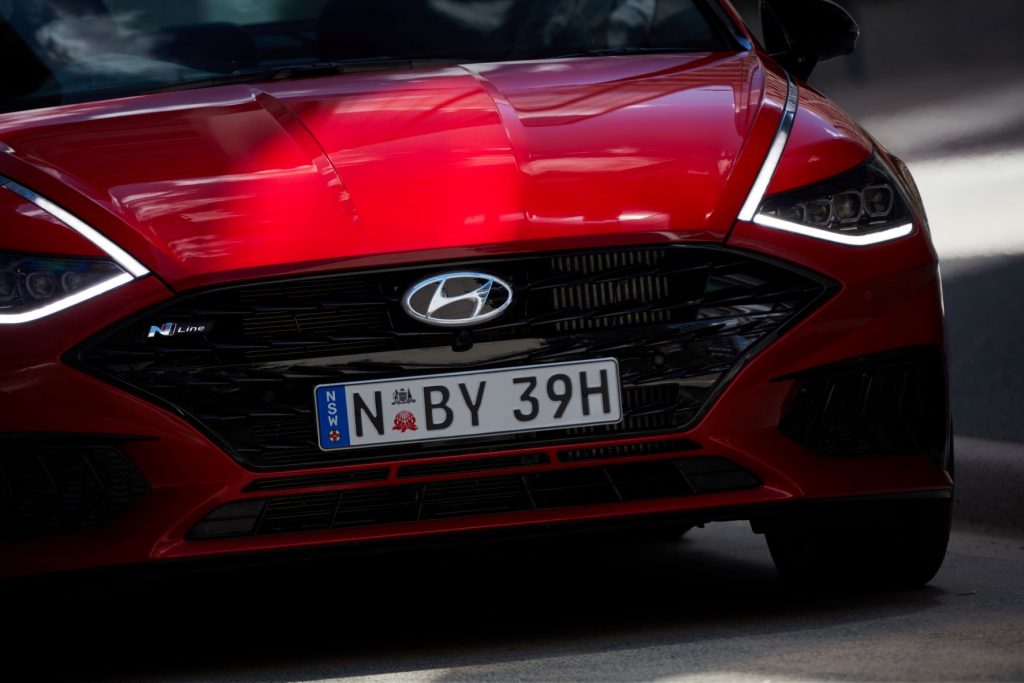
With launch control, the dash from 0-100km/h takes 6.2 seconds — pretty quick for a car that was once a mum and dad special.
To bring Sonata to a stop, engineers have added larger front and rear brake calipers and discs — 345 x 30mm ventilated front and 325 x 12mm solid discs rear.
Yes, you might have twigged to the fact that active sound means the engine note is enhanced artificially, but you know what — I don’t mind.
It simply makes the driving experience more engaging and that’s what really counts.
With claimed fuel consumption of 8.1L/100km from the 60-litre tank, we were getting 9.1L after more than 300km and it takes standard unleaded.
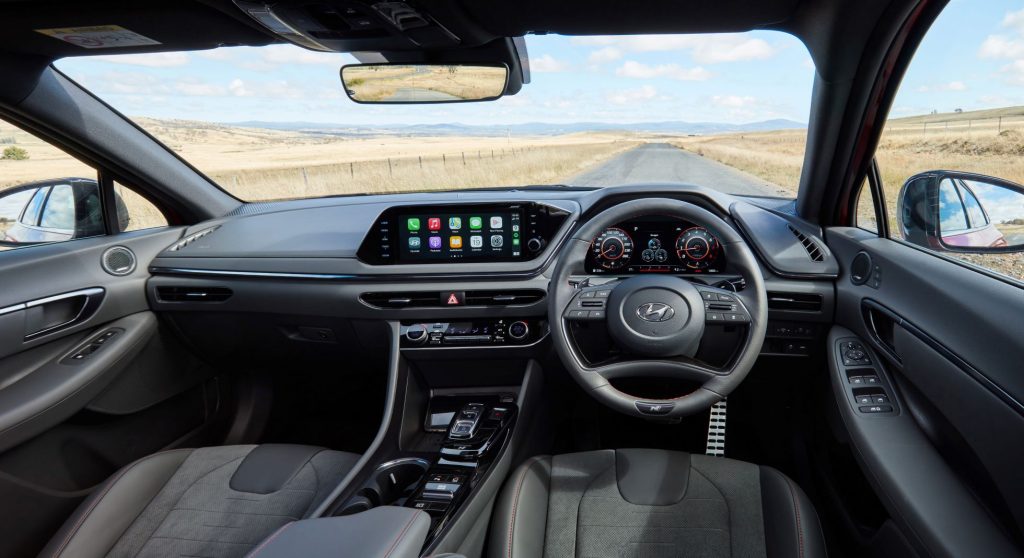
What we like?
- Looks sensational
- Sounds the business
- Gets up and boogies
- Push button gear selection
- Plenty of room in console for bits and bobs
What we don’t like?
- The name
- Interior a bit monotone
- No exterior boot release
- Glare makes some controls hard to see
- Door handle easy to fumble
- Location of handbrake switch
- Head up display almost invisible with polarised sunglasses
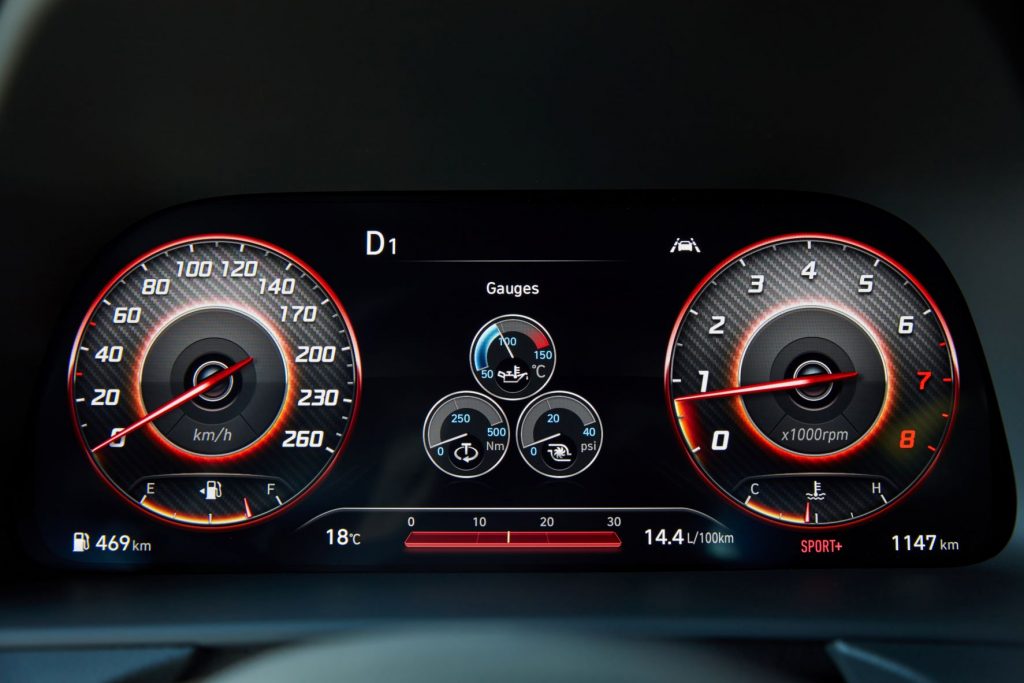
The bottom line?
Is it worth it? Drive it and see what you think.
Sonata N Line makes all the right noises and has all the right moves.
It will be a shame if this car does not get the attention it deserves, primarily because of the Sonata name and its history.
Say Sonata to someone and it conjures images of a boring, four-door econobox. Quite frankly, they should have ditched the name to make the transformation complete.
This review was prepared by Chris Riley and first appeared on cars4starters, https://cars4starters.com.au/ and appears with permission
seniordriveraus Comments
Few cars attracted more attention than the Hyundai Sonata N Line when we drove it, and most people initially mistook it for something else (usually European and almost invariably an Audi).
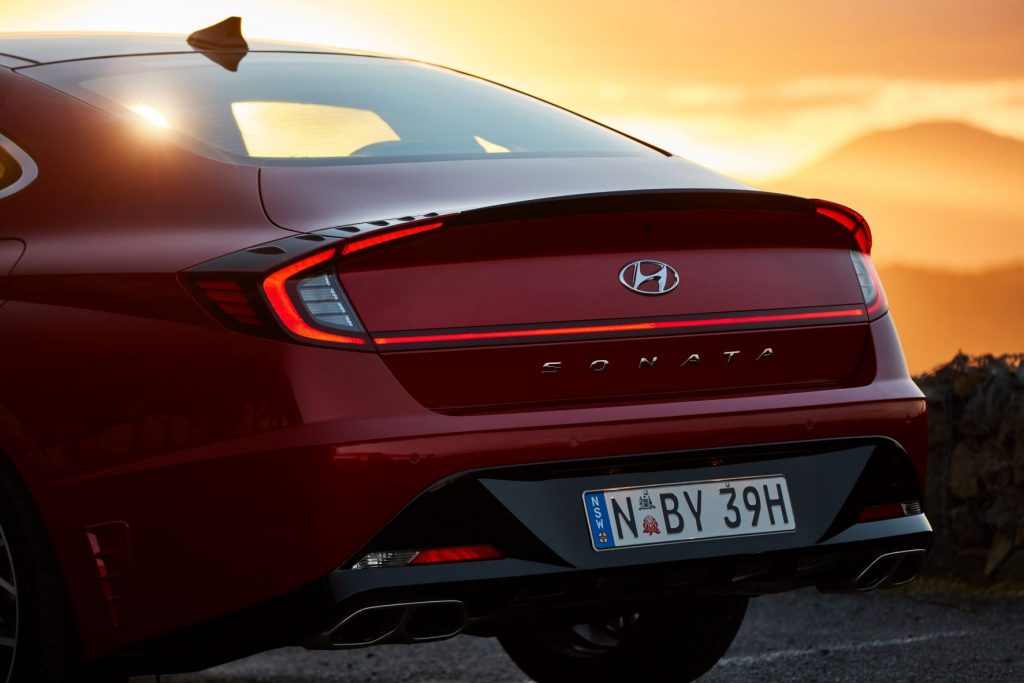
The Sonata N Line (and the Kia Stinger) both prove that the Koreans know how to design and build cars that deliver good old fashioned driving enjoyment.
The Kia Stinger most people think of is the 3.3-litre twin turbo six-cylinder version. The four-cylinder 200S variant is almost always overlooked and we actually thought the smaller-engined model felt better balanced and more enjoyable.
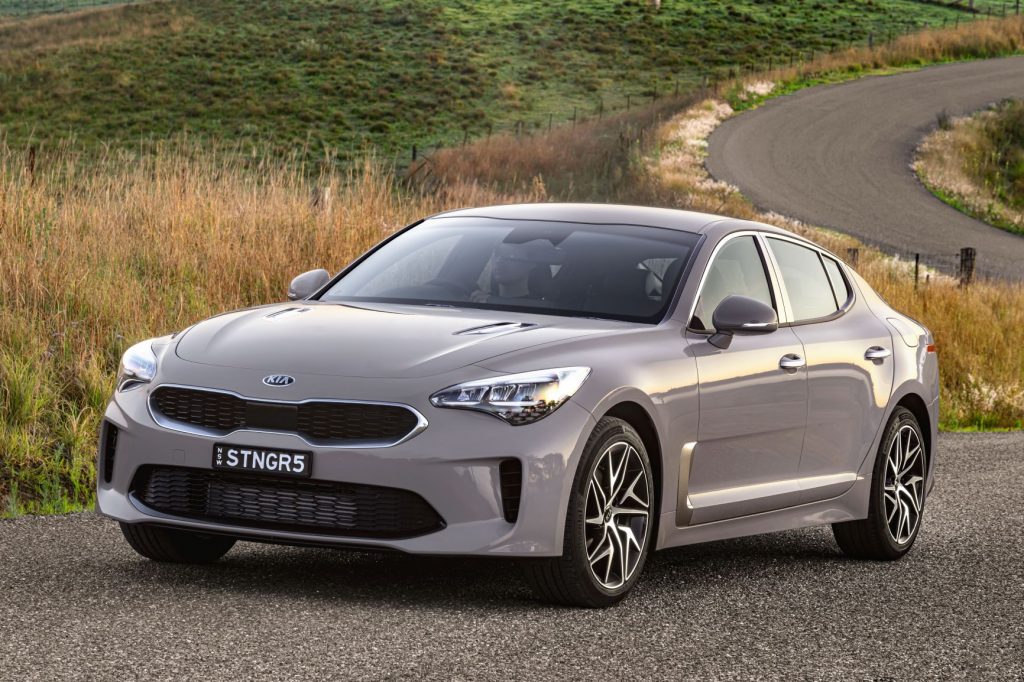
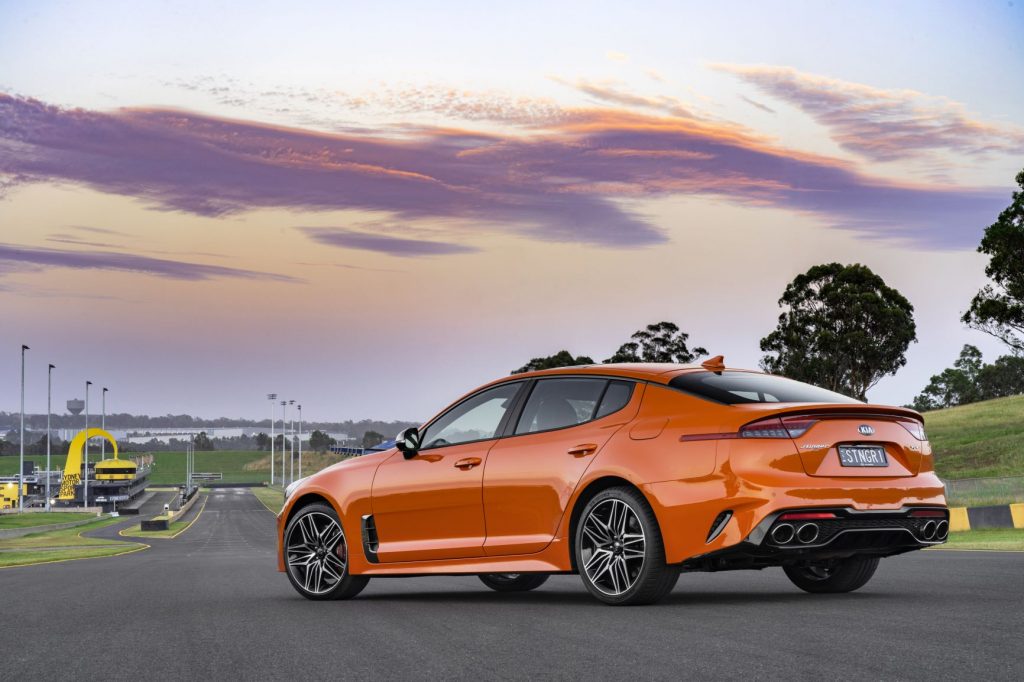
The Hyundai sits almost precisely between the four- and six-cylinder Stingers for power and torque, and even engine size (2-litres/3.3 litres for the Stingers, 2.5-litres for the Sonata). There’s not much in it for size, either; the Sonata is a little longer (+70cm), but narrower (by 10cm), taller (by 45cm) and sits on a shorter wheelbase (2840cm versus 2905cm). Despite this, the Hyundai Sonata is officially classified as “medium passenger” while the Kia Stinger falls into the “large passenger” category … go figure!
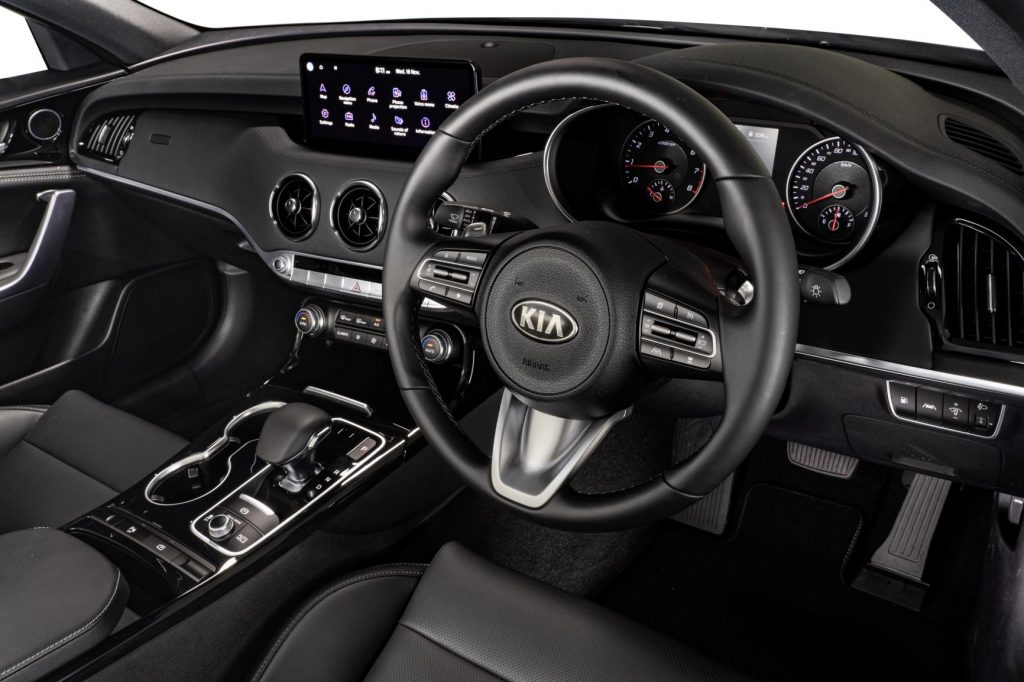
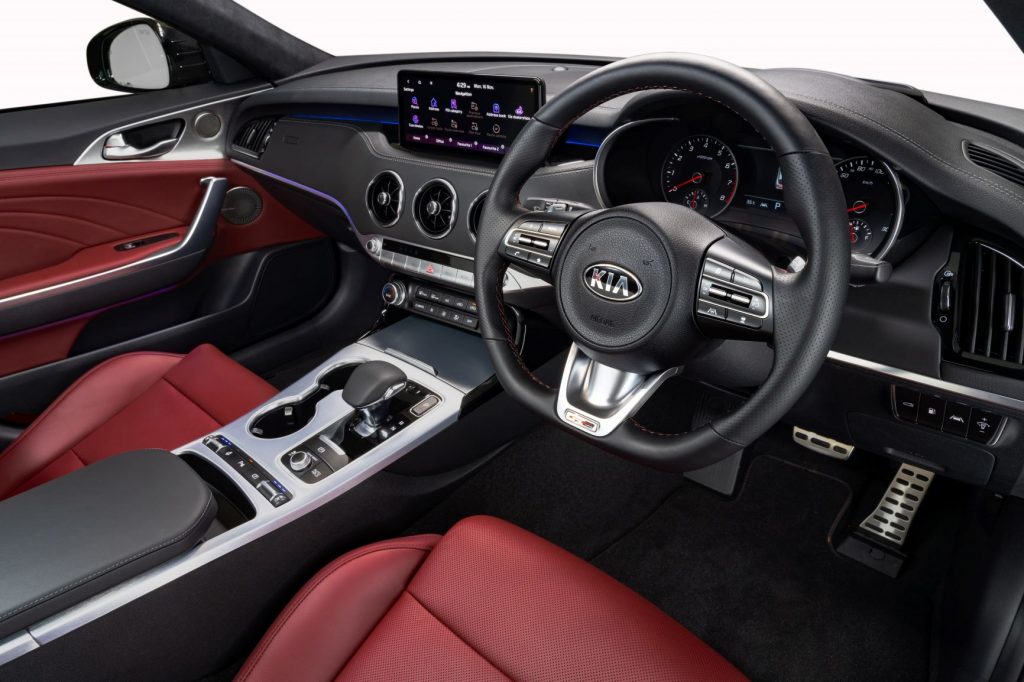
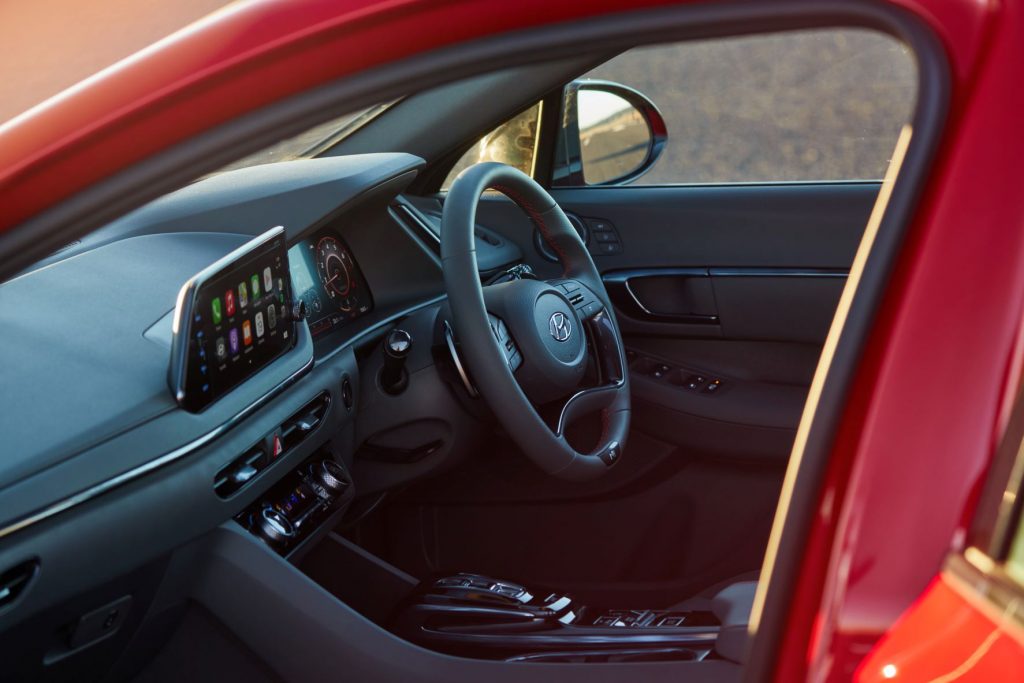
Unexpectedly, the Sonata gets wider and larger wheels (245/40 R19s as against the Stinger’s 225/45 R18 alloys). And the Stinger is heavier (+195kg for the six-cylinder, +122kg for the four).
There’s not much to choose between them for pricing, either. The entry level Kia 200S undercuts the Sonata N Line by a mere $740. The GT-Line Stinger 200S (which is probably closer in specification) is more expensive at $57,930 and the six-cylinder Stingers come in at $54,030 for the 3.3 V6 330S and rise to $63,960 for the 3.3 V6 GT (all prices plus on road costs).
One final consideration is the warranty: Kia tops the Hyundai five-year warranty with its excellent seven-year coverage.
